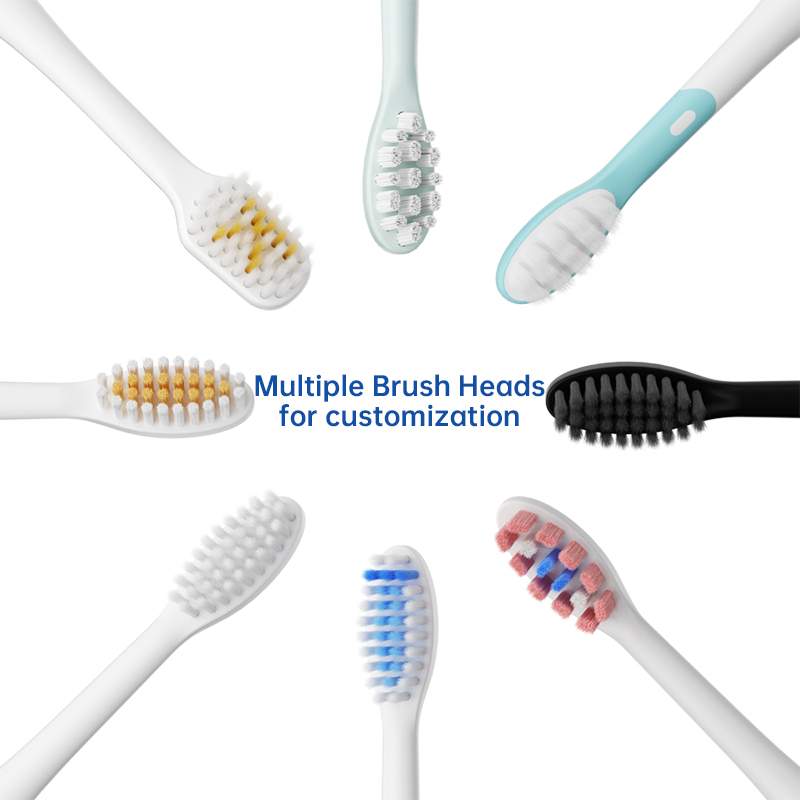In today’s competitive oral care market, ergonomic design in electric toothbrushes has become more than just a trend—it is an essential factor that determines user satisfaction and brand loyalty. Consumers are no longer focused solely on cleaning performance; they also demand comfortable grip design, intuitive operation, and superior comfort and usability in electric toothbrushes. For oral care brands seeking to collaborate with OEM manufacturers, understanding and applying OEM best practices in ergonomic design is the key to standing out.
The foundation of ergonomic toothbrush design lies in the handle. A comfortable grip design ensures that users of all ages can hold and maneuver the toothbrush with ease. OEMs should work closely with brands to explore handle materials, non-slip coatings, and shape variations that accommodate different hand sizes. By optimizing grip comfort, manufacturers enhance user-friendly oral care experiences.
While aesthetics play a role in product appeal, form must never compromise usability. Successful OEM partners integrate ergonomic research with product styling, ensuring that toothbrushes not only look sleek but also feel natural in the hand. This balance between form and function is a cornerstone of OEM best practices in product development.
Different consumer groups—such as children, seniors, or tech-savvy adults—have distinct ergonomic needs. For example, seniors may prefer thicker handles for easier control, while younger users may lean toward lightweight designs. Leading OEMs support customization in shape, texture, and weight to deliver superior comfort and usability in electric toothbrushes tailored to specific demographics.
Ergonomics goes beyond the handle. Placement of control buttons, vibration intensity settings, and brush head design all contribute to a user-friendly oral care experience. OEM manufacturers should prioritize intuitive layouts, ensuring that users can operate their toothbrushes effortlessly, even with wet hands or limited dexterity.
OEM best practices also emphasize material selection. BPA-free plastics, medical-grade silicones, and sustainable alternatives not only enhance comfort but also align with consumer demand for safety and eco-consciousness. Ergonomic innovation must be paired with responsible material choices to deliver products that resonate with modern buyers.
The most effective OEM partnerships are built on collaboration. Brands should work with manufacturers on multiple prototypes, gathering user feedback before finalizing production. Testing for superior comfort and usability in electric toothbrushes ensures the product design truly meets market expectations. This step cements ergonomic design as a tangible value proposition rather than a marketing buzzword.
For oral care brands, choosing the right OEM partner is not just about cost efficiency—it is about securing expertise in ergonomic design in electric toothbrushes. By focusing on comfortable grip design, user-friendly oral care features, and OEM best practices such as customization, safety, and thorough testing, brands can deliver products that achieve both consumer satisfaction and long-term market success.
.jpg)
Wholesale electric toothbrush USA

Is a Compact Electric Toothbrush Ideal for Boston Dorms?
Electric toothbrush wholesale Florida
.jpg)
Why Boston clinic recommended brushes help Boston sensitive gums
Occlusal Interference Plus Jaw Fatigue – Design Flaw?

How a Seattle sustainable toothbrush meets the Seattle tech toothbrush
.jpg)
Need Chicago repair service during Chicago holiday deals?

Water Flosser vs. Traditional Floss: Pros, Cons & Usage Tips
.jpg)
Electric toothbrush customization Chicago
.jpg)
Where to test a Seattle urban toothbrush? Visit the Seattle demo store!
Occlusal Discomfort Plus Salivary Alteration – Alarming?
.jpg)
Private label electric toothbrush supplier
.jpg)
Electric toothbrush manufacturer USA

POWSMART USA – Innovative Sonic & Smart Electric Toothbrush Manufacturer
Tray Deformation Causing Occlusal Discomfort – Fixable?
.jpg)
Best Electric Toothbrush With Pressure Sensor in Houston?

Private Label Whitening Gel
.jpg)
Florida Electric Toothbrush – Powsmart PTR-C8

electric toothbrush heads Charcoal Infuse-Round

Customization Teeth Whitening Gel

electric toothbrush heads Ultra Soft

electric toothbrush heads Regular Clean

Electric toothbrush heads Charcoal Infused-Diamond

electric toothbrush heads Deep Clean
whstapp
whstapp
National Toll-Free Service Hotline
+86 755 86238638